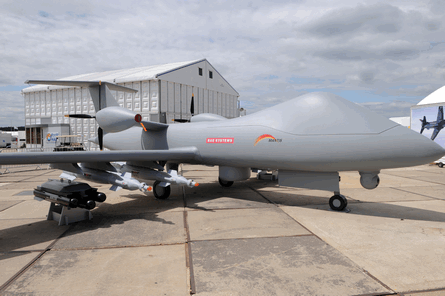The UK Ministry of Defence may deploy to Afghanistan its BAE System's Mantis advanced concept technology demonstrator unmanned air vehicle as part of Mantis's second development phase, or spiral.
The deployment could begin next year, replicating the MoD's Project Morrigan, which saw BAE's Herti UAV operate in Afghanistan to prove safe autonomous operations alongside manned strike aircraft in non-segregated airspace.
 |
|---|
Mantis has a wingspan of about 22m (72ft) and uses Rolls-Royce RB250B-17 engines, while the production variant could have a maximum operating altitude of about 55,000ft. A goal of the Mantis project is to prove out the accelerated platform development processes that the MoD and BAE wants and as Morrigan is seen as a success by the MoD, replicating it for the new technology demonstrator is viewed as a logical step. Mantis's phase two also has a weapons release capability focus.
"We want to pull through capability rapidly. We can bring some of those lessons [from Morrigan/Herti] into [Mantis]. Deployment to Afghanistan is a challenge with a larger vehicle [like Mantis], while support for Herti [in theatre] is in comparison quite straightforward," says Air Vice Marshal Simon Bollom. A senior BAE source confirms the MoD and prime contractor discussions about a Project Morrigan-style second phase exercise and describes the deployment as a "possibility".
Managed by the MoD's strategic UAV integrated project team, the Mantis budget is not being disclosed. Its first phase, which is funded 50% by industry and 50% by the MoD, started in the fourth quarter of 2007 and included windtunnel tests. Phase one, which has an ISTAR focus, will end with a planned Mantis first flight early in 2009.
A third phase is a possibility and another feature of phase two will be sensor development. BAE's partners for Mantis include GE Aviation, Qinetiq, Meggitt, Rolls-Royce and Selex Galileo.
Mantis will address 24h endurance and a payload capability equivalent to 12 MBDA Brimstone missiles or six Raytheon Paveway bombs. The use of a triplex flight-control system and two engines is to enable a future Mantis variant to be developed for civil applications.
Source: Flight International



















